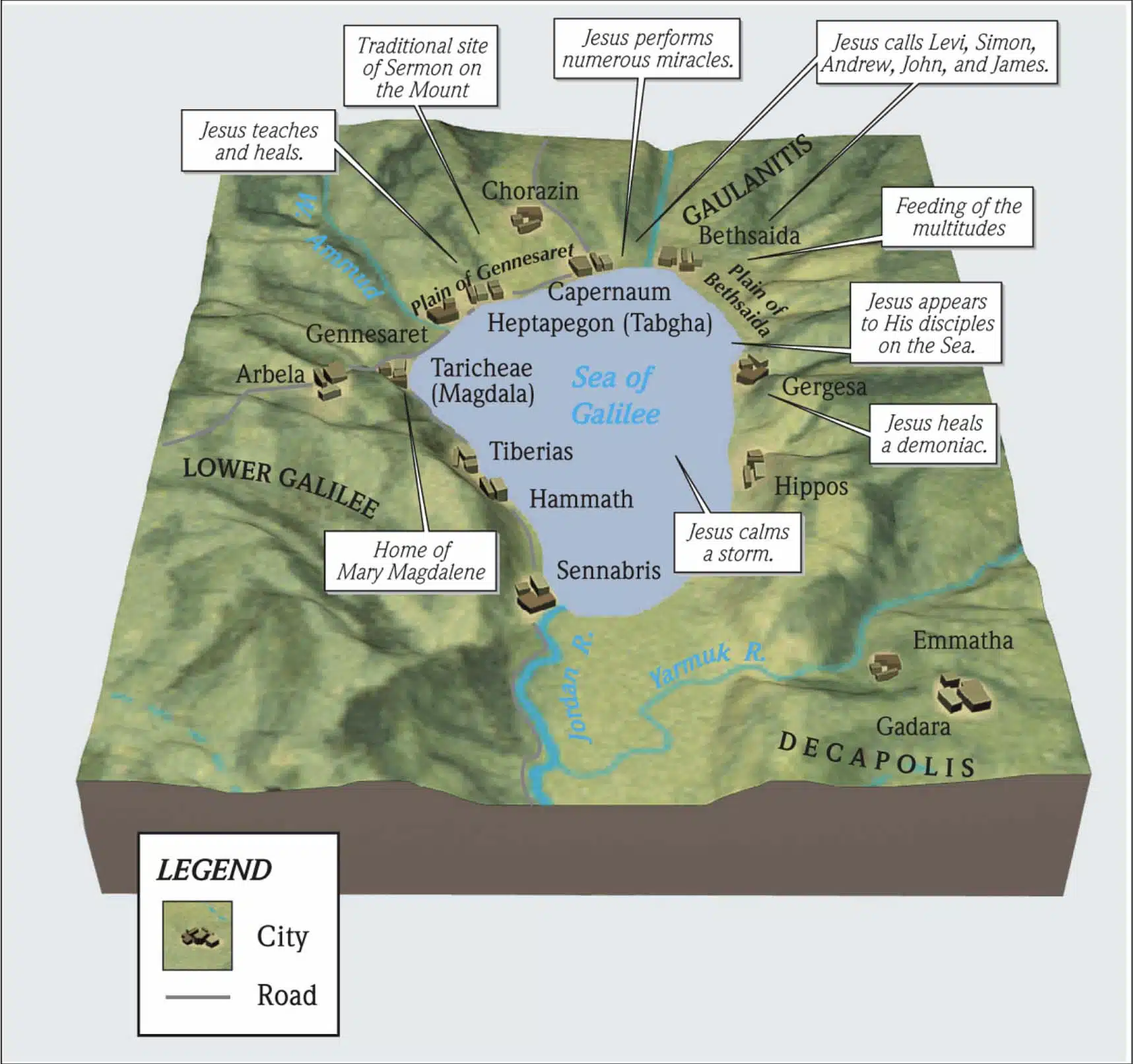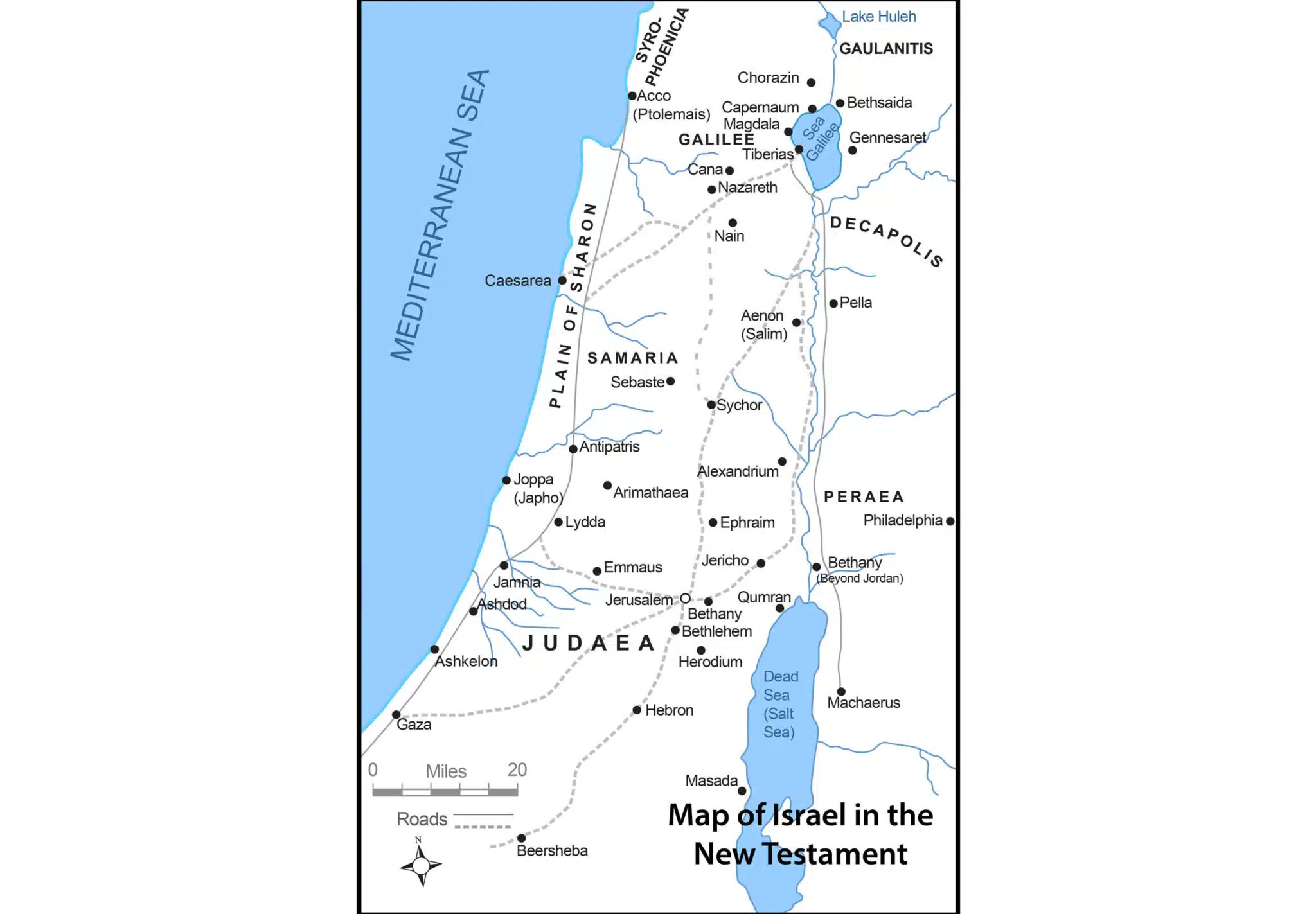Matthew introduces the main opponents of Jesus as Messiah: the Pharisees and the Sadducees. They have heard of John’s popularity and have come to be baptized by him. Instead of being warmly received by John, he gives them a startling rebuke.
The parallel account of this event is found in Luke 3:7.
John’s message and baptisms were drawing crowds. The popularity of this wilderness prophet began to stir the two parties of the religious establishment—the Pharisees and Sadducees.
The Pharisees were experts of the Old Testament and seen as religious leaders among the Jewish community. Their righteousness was considered something to aspire to and their influence among the people was enormous.
They controlled the synagogues, local gathering places, and centers of worship where God’s law was studied every day and taught each Sabbath. Before his encounter with Jesus and dramatic conversion on the road to Damascus (Acts 9:1-30), the apostle Paul was a rising star among the Pharisees because of his keen understanding and hot zeal for the law. (Philippians 3:4-6)
Maintaining Jewish culture and traditions was important to the Pharisees, especially during the Roman occupation which threatened to snuff it out—either by temptation or force. The Pharisees descended from the Maccabees, who successfully overthrew the Pagan rulers of the Seleucid dynasty (160 B.C.) when they outlawed Jewish expressions of faith. The Pharisees’ concern for the law was admirable. Following the Exile to Babylon and the Greek Occupation, the Pharisees diligently strove to avoid any hint of idolatry or Pagan customs.
To this end they set up boundaries and a hedge around the law, condemning any who approached a possible transgression. Over time the Pharisees’ traditions and customs became an oppressive law unto itself. And as these traditions extended from one generation to the next, they began to supersede God’s law which they originally intended to protect. Their traditions became not only their idol, but also a source of political power. They wielded a legalistic list of rules, and used them to crush anyone who dared defy them.
Throughout His ministry, Jesus was critical of the Pharisees’ legalistic traditions and their hypocrisy. Jesus’s criticisms, combined with His popularity among the people, made Him a threat to their prestige and power. This would cost Jesus His life.
The Sadducees were priests. They too were generally revered by the people, because as priests they performed sacrifices and carried out rituals in the Temple. They were largely Jewish aristocrats in and around the capital city of Jerusalem. Because of their wealth and power, the Sadducees tended to be more sympathetic to Rome than the Pharisees who cast a wary eye toward foreign influence.
The Sadducees were more comfortable compromising with Rome than were the Pharisees. These competing political groups also had significant theological differences. The Sadducees did not believe in life after death or the existence of angels (Matthew 22:23; Acts 23:8). The Pharisees accepted all these things and received the entire Old Testament from Genesis to Malachi as divinely authoritative. The Sadducees only accepted the Pentateuch (the first five books of the Bible).
It was the Sadducees’ affiliates, the moneychangers, whose tables Jesus turned over when He came to the Temple. (Matthew 21:12-13; John 2:13-22)
As religious parties the Pharisees and Sadducees were fierce and bitter rivals. Their feud lead to the Roman occupation which began almost a century earlier in 63 B.C. But even though they constantly opposed each other, Jesus united them as a common enemy. When it came to Jesus, they actively worked together to stop Him by any means necessary.
Many of the Pharisees and Sadducees were coming to John for baptism. Based on how John receives them, it seems that they wanted baptism from him to gain popularity among the people, rather than to genuinely repent and change their ways. John saw through them and was disgusted with their ulterior motives. For when he saw them coming for baptism, John harshly rebuked them in unflattering terms. He said to them, “You brood of vipers, who warned you to flee from the wrath to come?” (v 7). John’s branding of these religious leaders could not have been more shocking. By calling them a brood of vipers, John associates the most admirable and righteous men in the eyes of the Jews with the accursed Serpent who deceived Eve at the Fall. (Genesis 3:1-15) Before they ever encounter Jesus, John forewarns of their opposition to God’s Messiah, and identifies them as the serpent’s “seed.”
“And I will put enmity
Between you and the woman,
And between your seed and her seed;”
(Genesis 3:15a)
This spiritual ancestry of the serpent is in sharp contrast with Abraham (patriarch and founder of the Jewish faith) whom the Pharisees and Sadducees claim as their father (Matthew 3:9). The upshot of John’s scolding is that when he raises the rhetorical question, “who warned you to flee from the wrath to come?” he is essentially saying, “Who warned the devil that he needed to repent!”
Matthew’s dramatic introduction of the Pharisees and Sadducees makes it clear that they will be key villains in the drama that will unfold. Matthew has already presented Jesus as the long-awaited Messiah, the heir of King David. Recording John’s branding of the Pharisees and Sadducees as a brood of vipers provides reputable, third-party validation of their villainy. John the Baptizer was undisputed as a prophet, so Matthew presents John’s testimony regarding the Pharisees and Sadducees early on in his gospel.
Biblical Text
7 But when he saw many of the Pharisees and Sadducees coming for baptism, he said to them, “You brood of vipers, who warned you to flee from the wrath to come?
Check out our other commentaries:
-
Luke 10:36-37 meaning
Jesus asks the religious lawyer which of the three travelers was a neighbor to the injured man. The lawyer responds, “The one who showed him...... -
Numbers 13:3-16 meaning
Numbers 13:3-16 contains a list of the names of the men sent by Moses to explore the land of Canaan. The tribe of Levi was...... -
2 Thessalonians 3:16-18 meaning
Paul blesses his readers with words of goodwill from God, that the Thessalonians would experience His peace and favor always....... -
Daniel 5:20-21 meaning
Daniel further reminds Belshazzar that Nebuchadnezzar was humiliated by God because of his pride. For seven years, the king lived like a wild animal, until...... -
Ecclesiastes 5:8 meaning
Bureaucracy contributes to injustice.......




